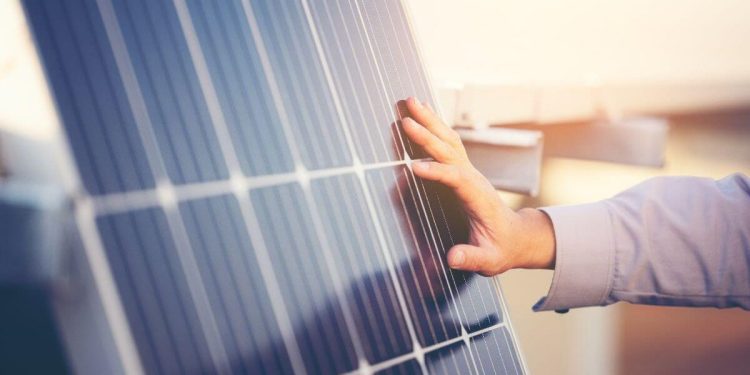What are the essential solar panel parts you need to know?
- Monocrystalline silicon solar panels
- Backsheet
- Junction Box and wiring
- Frame and mounting structure
- EVA encapsulation and Tempered glass
Overview
It’s crucial to comprehend the basic elements of a solar panel. Solar panels made of monocrystalline silicon generate power. Power flow is regulated by the junction box, while the back sheet provides environmental protection. Durability and flexible installation are guaranteed by the frame and mounting. Tempered glass and EVA encapsulation combine effectiveness and protection. A cleaner and more sustainable future is advanced by the function that each component plays in the overall operation of solar panels.
As environmental factors continue to change our world every second, people around the world are considering a shift toward renewable and cleaner energy sources. Solar panels rise as a striking feature in the sustainable energy quest. This innovative solution captures the natural gift of the sun’s rays of light and converts them into electricity – effectively substituting our need for fossil fuels and reducing our carbon footprint. However, have you ever contemplated the complex arrangement of components harmoniously working together in a solar panel?
This article will provide you with a simple guide to casting a spotlight on these integral solar panel parts, disentangling their roles in the mission to convert sunlight into functional energy and lead the way to a more sustainable future for one and all.
Monocrystalline Silicon Solar Panels
Photovoltaic cells are positioned as the heart of every solar panel, and among all, monocrystalline silicon solar panels hold the throne. Made from a solitary crystal lattice of silicon, these cells bear unparalleled prowess in converting sunlight to electricity. Their homogenous crystal structure reduces electron resistance, promoting the best rates of energy conversion. Monocrystalline panels are the best choice for a variety of applications due to their outstanding performance and sleek appearance.
Further reading: Things You Need to Know About Monocrystalline Solar Panels
Backsheet

Operating inconspicuously behind the solar panel is the back sheet layer, a seemingly silent, yet vital solar panel part that shields the panel from external elements.
Placed on the panel’s rear, it is employed as a formidable guard against shifting temperatures, the onslaught of UV rays, and moisture. The back sheet, formed from stalwartly defiant materials, assures the maintenance and protection of the internal components throughout the solar panel’s life span. It serves as the knight in shining armor, shielding against moisture that could potentially lead to electrical hiccups and efficiency loss.
Junction Box and Wiring
Though its presence might initially seem small, the junction box institutes a substantial function within the solar panel’s connectivity blueprint. Tucked away at the panel’s back, this mini box yields a sophisticated network of wiring that binds the photovoltaic cells together. It stands as an efficient junction platform for these connections, allowing a seamless transfer of the generated power.
In many cases, junction boxes are equipped with bypass diodes that regulate electrical flow and minimize losses due to shadowing, thus playing a pivotal role in controlling the panel’s power delivery to the external grid.
Frame and Mounting Structure

Often overlooked and underappreciated, the frame of a solar panel stands as a foundational pillar, providing both structural integrity and facilitating seamless installation. Crafted from robust materials such as aluminum, the frame not only imparts robustness to the panel but also doubles as a mounting apparatus.
This essential feature enables the secure fixation of solar panels onto a variety of surfaces, spanning from residential rooftops to expansive ground installations. The enduring nature of the frame ensures the panel’s longevity, enabling it to withstand the rigors of time and environmental conditions, all while preserving its efficiency and dependability throughout its operational lifespan.
Read Next: Benefits of Partnering with a Trusted Solar Panel Distributor in the Philippines
EVA Encapsulation and Tempered Glass
Glistening atop the surface of photovoltaic cells is a dynamic alliance of EVA (ethylene-vinyl acetate) encapsulation and tempered glass. This dynamic duo is designed with a dual purpose: protection and performance enhancement.
EVA encapsulation acts as a vigilant shield, guarding the delicate PV cells against mechanical abrasions, moisture, and particulate intrusion, all while facilitating the unhindered entry of sunlight. Overlaying the EVA is the fortified tempered glass, serving as a resolute, transparent barrier against unpredictable weather variations, relentless UV exposure, and external stresses. This synergistic defense mechanism secures optimal panel performance and extends its lifespan by safeguarding its core components.
Key Takeaway
Understanding the intricacies of solar panel components is like uncovering the remarkable science that harnesses the infinite energy of the sun. Each part holds significance: the precision-crafted monocrystalline silicon cells spearhead the conversion of solar power to electricity, while protective and structural elements champion the cause of long-lasting efficiency.
As our journey towards sustainable practices progresses, understanding these technological subtleties becomes profoundly essential. Let us see a Philippines that pioneers sustainable energy together, contact us at Solaric, the best solar panel brand in the country. We can’t wait to build a greener, sun-powered future with you.


















